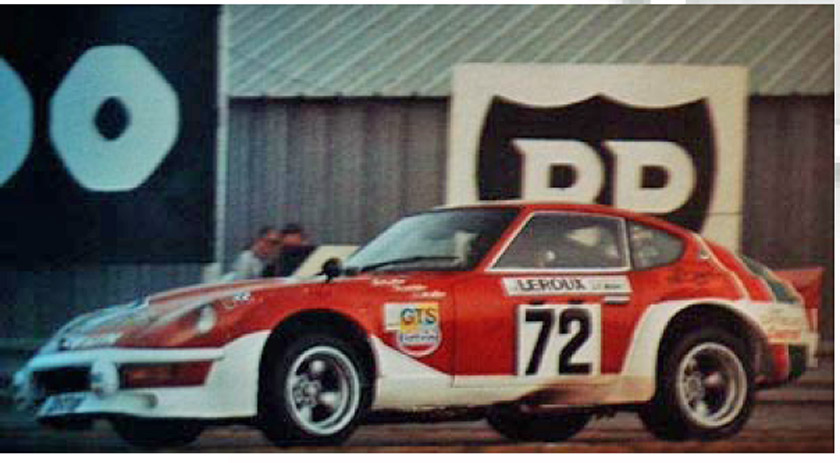So lets first clear up some of the confusion over K cars - they don't have to be "The Car" from the day they can be a new build finished today, tomorrow or sometime into the future. K cars can include "The Car" from the day but also these new builds.
The key point is the new builds and even "The Car" must be true to the Period the car is built to. This is my understanding having read the documents.
So for example if you managed to acquire a genuine....let me talk about the marque of car I own and love (sorry if you don't like them I do and I know a lot about them) 1970 Datsun 240z ex Works Rally car. Maybe the find/purchase was lucky and it was a freeze in time a true barn find so you only need to restore the car. Then the process is simple (costly sure) but the car is correct, parts are correct just need to do the paper work etc. Depending on the state of the Works car as I now Nissan changed the groups the cars were homologated for will depend on the group/period the car will be classified under either MSNZ Schedule K or FIA Appendix K HTP.
Again this is a dump as my brain that hurts from this reading to make sure I have got it right and other get the same results as I.
Again lets assume you find "the car" but it was modified sometime in 1974 for circuit racing. You know have a choice - restore the car to 74 period or remove the mods that are outside the rules for when it ran in 1970 and restore to that spec and apply for the paper work.
The same applies to a Datsun 240z you find/purchase on trademe/via a club member etc. You have choices when it comes to K cars.
1. Run it as a Group 3 (that what Datsun 240z/260z/280z aka S30 chassic) Standard Production Sport & GT car = the car must match those rules/FIA homologated for the period chosen basically a standard road car.
2. Run it as a Group 4 Competition Sports and GT - all the Works parts were mostly homologated under this group. ie a Works replica like "the car" described above - however you have to find or replicate the works parts so they will be accepted as true replicas of original parts - having said that "the car" might need to do the same if the parts are not there or unusable.
Depending on your chosen Marque and model of car you might have more scope for changes as that manufacture might have homologated more optional parts under different groups etc. However there are some bits in the rules that are very clear you can't mix and match from different groups and periods to build something that suits you ie the best of each bit.
An example of that is pre 72 fiber glass doors, bonnet, guards where permitted for a given group and pre 72 is the period. Now if you want to run 4 pot brakes that were approved in 76 replacing the 2 pots then you have to give up the fiber glass panels as they were banded after 72. So you can't run both the fiber glass panels and the 4 pots in the period of the build. So you pick the period and stick with it.
This is where all the documents and evidence you can get the better chance you have of running the car - if you can't proof a part was used via the methods outlined in the documents then the standard part is applied.
If a car had a 4 link in 75 and only a SOHC but in the same make and model ran but in 70 ran a 2 link and DOHC you can't have the a 4 link and DOHC and run either period.
K cars are to be build and ran as Homologated first and for most then as I read the MSNZ Schedule K then other options from the period can be fitted if the car is classified correctly ie adding an part from the options/sports list might mean the car is not longer a "Series Production (Saloon) car" but becomes in fact a "Competition Touring Car"
I will talk about Schedule T&C next.






 Reply With Quote
Reply With Quote



